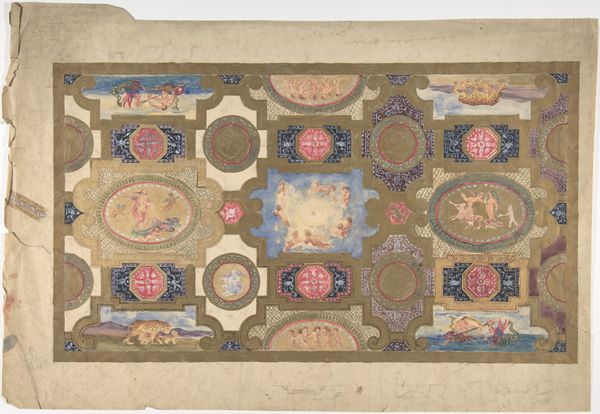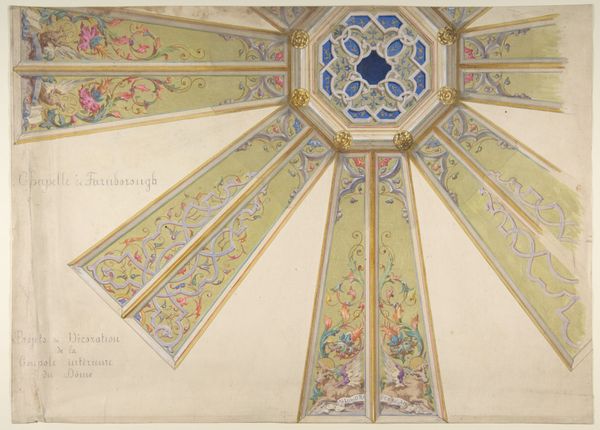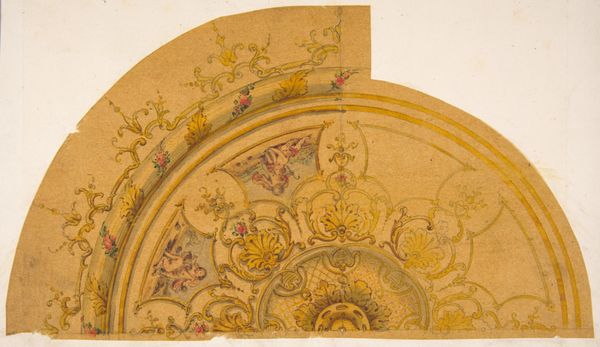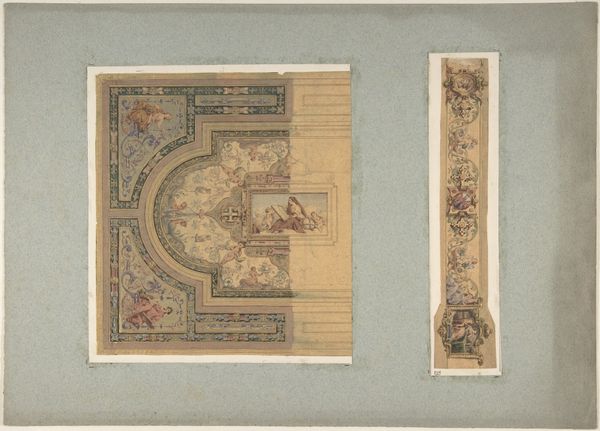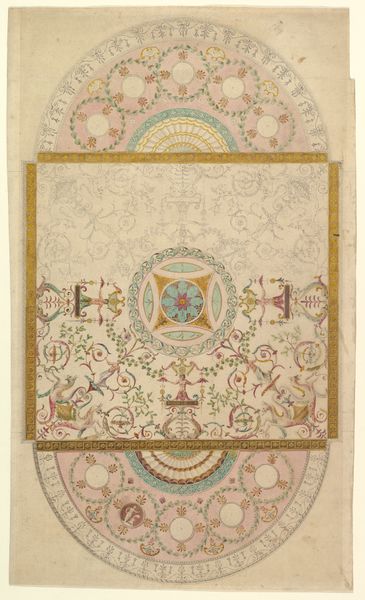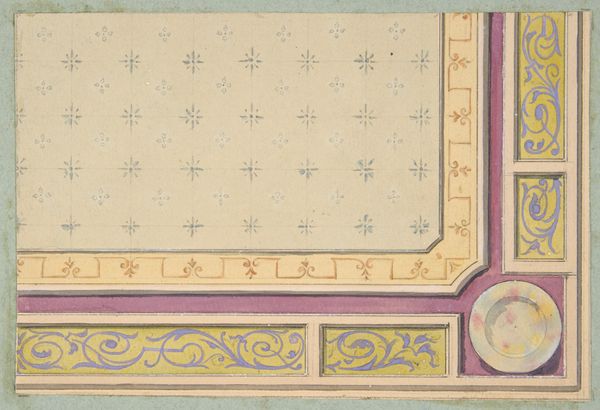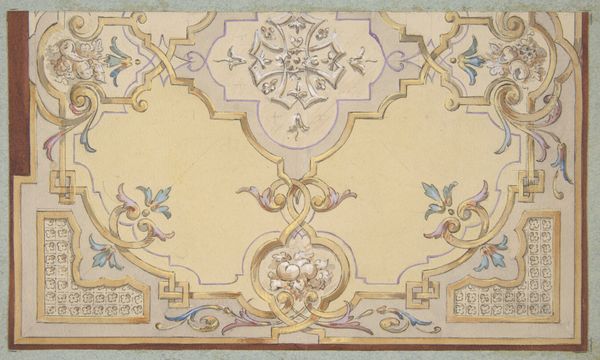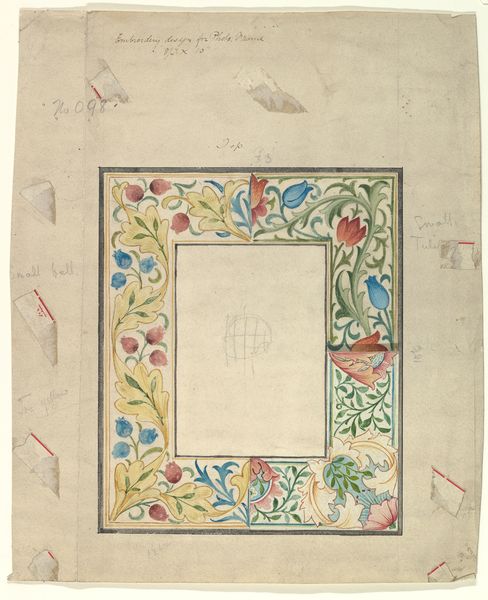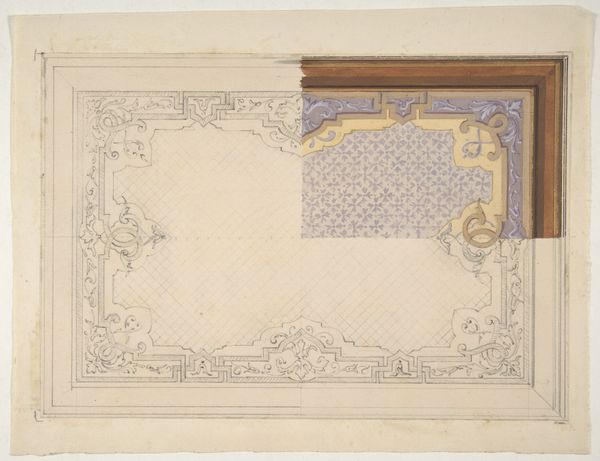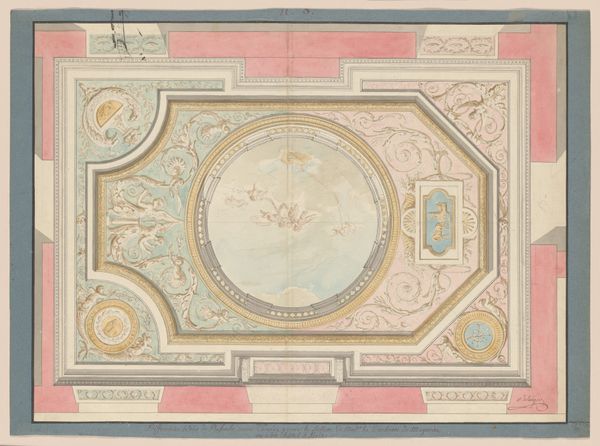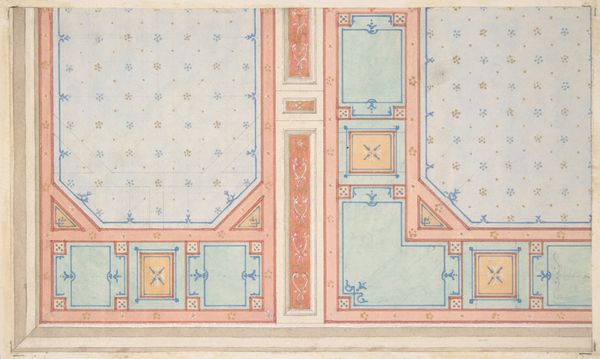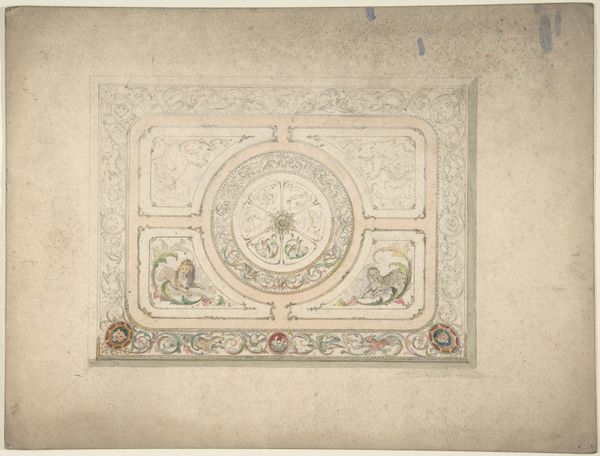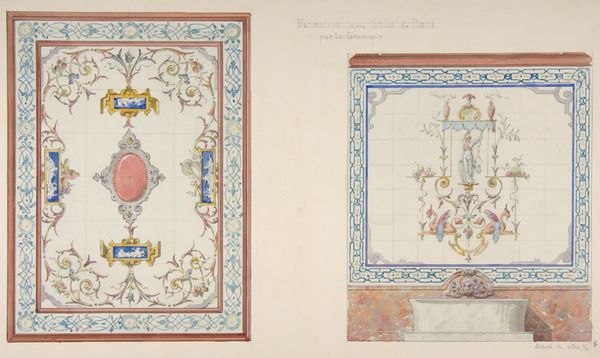
drawing, print, watercolor
#
drawing
#
toned paper
#
water colours
# print
#
figuration
#
11_renaissance
#
watercolor
#
geometric
#
decorative-art
Dimensions: sheet: 16 1/4 x 14 1/4 in. (41.3 x 36.2 cm)
Copyright: Public Domain
Curator: This is a design for a ceiling decoration, created by an anonymous artist in the 19th century, employing watercolor and print on toned paper. What’s your first take? Editor: A dreamy, almost weightless composition! It’s a wash of muted tones – creams, pale pinks, and faded blues – giving it an ethereal quality. A rococo fantasy floating above. Curator: I see the architectural application too, noting how the drawing visualizes a plan— the gridded spaces intended for the architectural production and spatial labor for ceiling installations, while geometric frames containing figuration echo both the Renaissance and Neoclassical styles. Think of the labor required to scale and realize a piece like this. Editor: Absolutely. And within that labor, there’s also the visual rhetoric: putti and classical motifs arranged within these decorative panels. These angelic figures are often used to symbolize innocence and divine love, of course. It is about creating a very specific kind of domestic atmosphere... but also about exclusion. What labor allowed the decoration of the ceiling to be a task. Curator: Yes, the imagery catered to a certain class. Now, examining the toned paper—it has visible creases, suggesting this wasn’t just a pristine presentation piece, but likely something actively handled in the production process of its time. We can observe areas where watercolor washes meet printed lines, and it makes me think of the artist's careful consideration of medium and sequence in this particular plan. Editor: Consider its function too—this design elevates and mythologizes the inhabitants below. Who are these inhabitants? Were they the patrons? And think about the gendered dimensions—what was the domestic position for women in these types of interiors and in these settings. Curator: And in its function as a blueprint, the object in itself reveals an artisan's hand in materializing ideas within the system of production— revealing not just a concept but a potential site for craftwork that ties into larger structures of decorative making. Editor: Viewing this "ceiling decoration," this reveals social and gender history. Not simply a record of high-society aesthetics, but traces and labor needed for that luxurious, imagined and exclusionary ideal to come to material being. It becomes a window onto a more complex narrative. Curator: Exactly! A look behind the surface, so to speak, at the collaborative labor embedded within that gilded picture. Editor: A view beyond.
Comments
No comments
Be the first to comment and join the conversation on the ultimate creative platform.
